Neptunia: Sisters vs Sisters is the mainline Nep fans have been waiting for
One of the things I have always liked about the Neptunia series is the way in which its ensemble cast has successfully transcended its original concept into a group of “virtual actors” who can turn their attention to a variety of things. What started as a fun joke about “girls who are video game consoles” has grown exponentially into a beloved franchise, where these characters are now far more than simple anthropomorphised versions of gaming legends. And Neptunia: Sisters vs Sisters is a great example of this.
One of the side-effects of what I describe, however, is the fact that Idea Factory, Compile Heart and their various development partners for the series have felt empowered to explore exactly what this cast is capable of, and what kinds of game they can support. To that end, we’ve seen idol management sims, strategy RPGs, side-scrollers, 3D beat ’em ups, shoot ’em ups and action RPGs, and they’ve all been a great deal of fun.
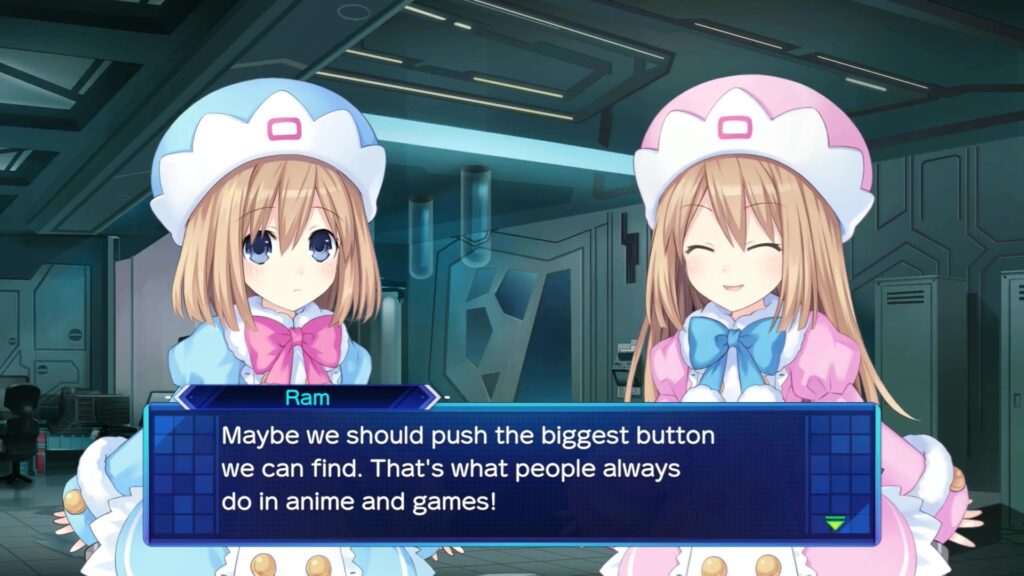
But the core audience of Neptunia is always hungry for what they regard as “mainline” installments — traditional RPGs that advance the overall story of the Neptunia universe, and provide us with the opportunity to see these characters facing (and, hopefully, overcoming) some sort of canonical threat to themselves and the world of Gamindustri in which they live. And here’s where Neptunia: Sisters vs Sisters gets interesting: while a lot of the marketing in the run-up to release may have made it seem like another action RPG spinoff to the series, this is most definitely the next mainline Neptunia title — and one of the best to date.
Neptunia: Sisters vs Sisters is pretty much a direct sequel to Hyperdimension Neptunia mk2 specifically. It has the same focus on the “sister” characters rather than the main cast, it features numerous callbacks to mk2’s narrative, and it has the same overriding dark tone which that installment specifically featured throughout.
It doesn’t discount the existence of the excellent Hyperdimension Neptunia Victory or Megadimension Neptunia VII, however; there are references to both throughout, though as with most Neptunia titles, newcomers can safely jump into this installment first and not be left at a complete loss as to what is going on.
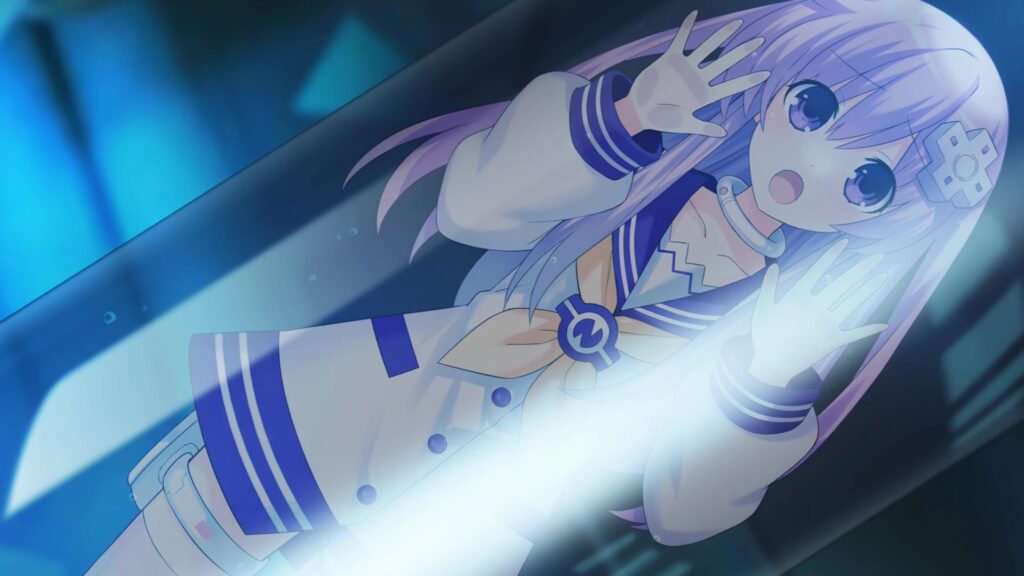
Much like Hyperdimension Neptunia mk2, Neptunia: Sisters vs Sisters opens in a situation where Nepgear, Uni, Rom and Ram are placed in a situation where they’re forced to take the leading role as the goddesses for their respective nations; the main cast have gone off to the PC Continent to deal with some sort of disaster which appears to be unfolding there, leaving the sisters back home to hold down the fort.
Unfortunately, disaster strikes as Nepgear and company investigate an underground laboratory that they find near Planeptune. They inadvertently awaken what appears to be an as-yet unknown goddess, whom they initially refer to as the Ashen Goddess, who pushes them into a cryogenic suspension capsule. They awaken two years later to find a Gamindustri which is struggling from a variety of different angles.
Firstly, the rise of smartphone addiction is having a noticeably negative impact on the populace of the world, and secondly, a phenomenon known as the Trendi Outbreak has been causing hordes of monsters to appear unexpectedly across the world, even going so far as to force the residents of Planeptune into hiding in the basement of a ruined game store.

By far the worst thing that Nepgear discovers, however, is that her beloved sister Neptune is missing; following her battle alongside Noire, Vert and Blanc against what appeared to be the resurrection of Deity of Sin (DOS, geddit) Arfoire on the PC Continent, Neptune was sucked into a dimensional rift. No-one knows if she’s even alive, which naturally puts the rather fragile Nepgear in something of a state of shock, forcing her to once again step up into the protagonist role and try to set things right.
Nepgear is a delightful character in that she’s the polar opposite to her sister. While Neptune is constantly cracking jokes and breaking the fourth wall to address the player (and the developers), Nepgear plays things admirably straight in Neptunia: Sisters vs Sisters — to a fault, at times. She immerses herself fully in her “role”, and takes things seriously, and this means that her feelings about Neptune being missing are convincing and emotionally engaging.
While her past appearances made a bit of a joke about the fact she is uncomfortable being in the leading role — with her even believing herself to be “too boring” to be the lead character on more than one occasion in previous games — in Neptunia: Sisters vs Sisters she knows, deep down, that she has no time to feel sorry for herself. The world is in a right old state, and she’s in a position where she might be able to do something about it. And as such, we see some genuine character growth as she learns how to be a leader and feel more confident in herself; it’s actually rather inspiring to see.
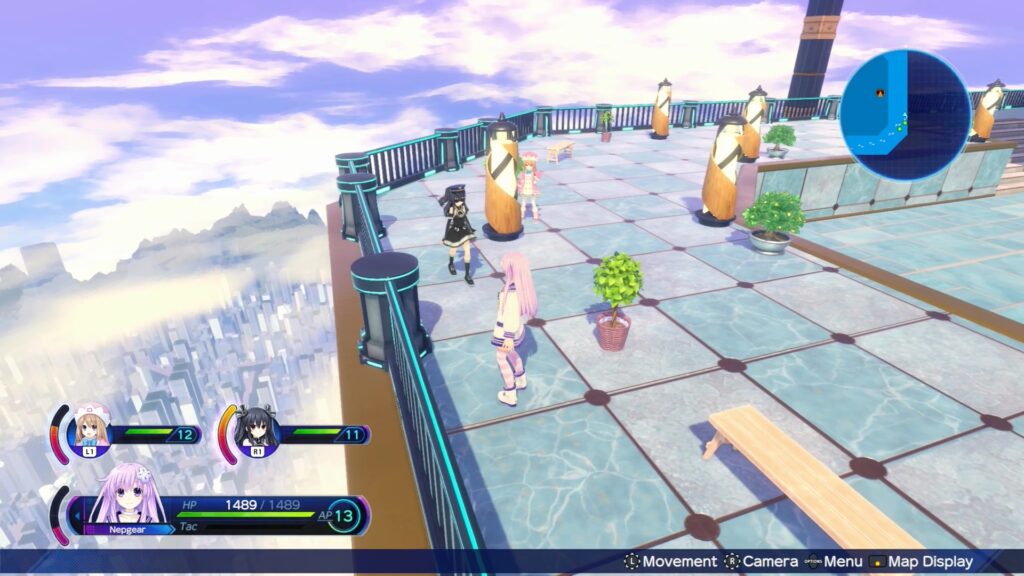
She doesn’t have to do it alone, of course. Not only does she have the other established sister characters alongside her, she also has Noire, Blanc and Vert from the “main” cast, as well as a number of new characters introduced for this particular installment. On the relatively minor side of things are the obligatory “these characters are references” inclusions Shanghai Alice and Higurashi, both of whom have fun, if brief, roles to play in the main narrative. But a much more major role in Neptunia: Sisters vs Sisters is given to the characters Maho and Anri, who represent smartphones and PCs respectively.
I’ll refrain from spoiling things for now, but suffice to say they have a somewhat complex relationship that only gets more intriguing as the story progresses, and part of Nepgear’s role in the new world of Gamindustri is understanding these two and where they fit in to everything. While they initially come across as simple refugees from the ruined PC continent, it’s clear pretty early on that there’s a lot more going on with them.
As with most Neptunia games, Neptunia: Sisters vs Sisters features plenty of timely, topical and satirical allegory on the state of the world and the games industry. While the story may initially appear to be a cautionary tale about smartphone addiction and the damage smartphone gaming does to PC and console gaming, it’s actually much more complex than that; the game specifically acknowledges that there’s a time and place for all types of gaming, and that completely rejecting one in favour of another deliberately limits your own experiences.

In fact — mild spoiler, I guess — if you want to get Neptunia: Sisters vs Sisters’ “true” ending, you need to manipulate the “share” level between the goddesses and smartphones to such a degree that the goddesses enjoy a majority while also allowing smartphones to coexist with them. The “normal” ending comes if you completely dominate the smartphone sector with the goddesses, while the “bad” ending occurs if you allow smartphones a significant majority. I think we can look at that, in itself, as some pretty solid commentary on the situation, entirely through game mechanics and structure.
Another hilarious mechanical aspect of Neptunia: Sisters vs Sisters that is clearly making a point is the way in which the game’s sidequests are delivered through the in-universe Twitter equivalent Chirper. Because of this, you’ll find yourself obsessively checking Chirper during moments of downtime in the game just to see if anything new has popped up — and there are also cute little messages from the characters you can interact with, too. It’s all too easy to get swept up in continually looking at Chirper when you’re supposed to be doing something else — much like it’s easy to get caught doomscrolling on a real phone while engaging in another activity.
Probably the more significant part of the narrative, at least early in the game, is the aforementioned Trendi Outbreak situation. While this initially appears to be commentary on the vapid nature of social media — the “boss” monsters triggering said outbreaks are known as “Trendfluencers”, after all — it’s actually more of a sidelong look at the COVID-19 pandemic.
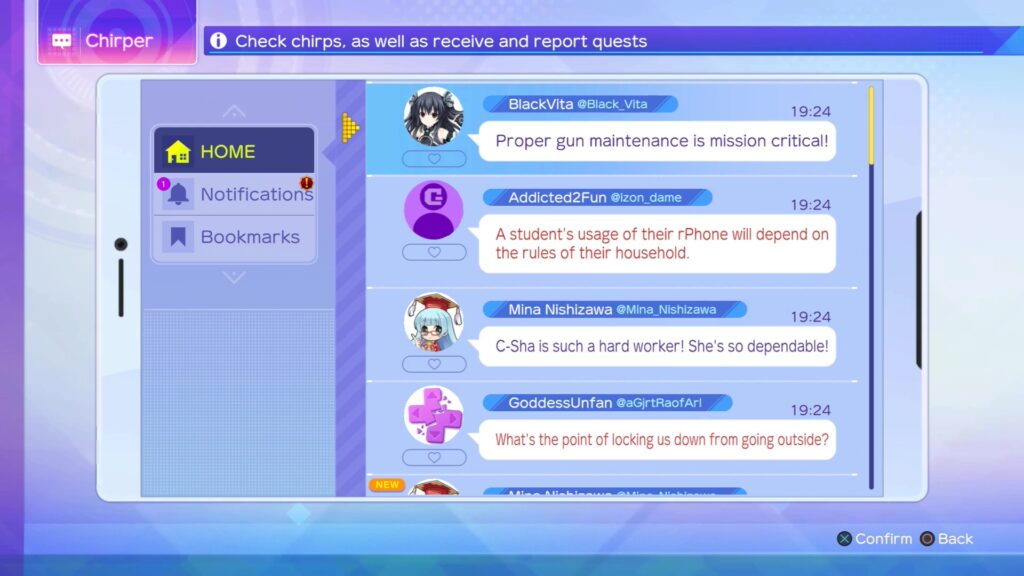
This becomes particularly clear when you first visit Noire and Vert after Nepgear and company wake up after their long sleep; their nations have been placed in lockdown, and while most of the populace appear to be fine with this, there is a vocal minority in both nations who object rather vehemently to it for various reasons. Quelling this unrest and convincing people of the dangers while also acknowledging their concerns forms a major part of the early game.
The tone, on the whole, is surprisingly dark for a Neptunia game. While there are plenty of light-hearted moments to enjoy, there’s a real sense that Gamindustri is suffering, and for every bit of progress Nepgear and company make, there’s another potential disaster looming around the corner just waiting to strike. It’s a really apt reflection of the last few years living in the real world, where it feels nigh impossible to just sit back and feel happy about life — there’s always something to feel anxious about.
This dark feeling only grows as Neptunia: Sisters vs Sisters’ narrative proceeds, too. Recurring villain Arfoire is, of course, back — but rather than being the somewhat bumbling idiot she is in other Neptunia games, in this one she’s a genuinely threatening force of evil. She’s manipulative and she has somewhat terrifying powers — towards the end of the game, things are quite masterfully handled in that you’re never quite sure if you can trust any of the characters around Nepgear, even those you might think “should” be closest to her.

Suffice to say, then, that Neptunia: Sisters vs Sisters has an excellent narrative; most definitely one of the best the series has ever seen. It’s thought-provoking, it’s enjoyable, it’s relatable and it’s dramatic. It feels like a notable step forward from some of the earlier Neptunia titles, which could often feel a bit like a silly jaunt across the world at heart; here, there’s a genuine sense of threat, fear and sadness permeating everything which really works well when juxtaposed with the colourful characters.
So what of the gameplay? Well, there’s a lot of good things to praise, and a couple of things to criticise. Let’s get the latter out of the way first: Neptunia Sisters vs Sisters could really do with a little more variety in its dungeons. While each dungeon is noticeably larger than any seen in previous Neptunia games, the number of different environments in which they unfold is quite limited. Outside of specifically designed “event” dungeons, there are only really two types: forest and cave, with a couple of variations in colour and environmental effects.
This is a bit of a shame, because one of the great pleasures of past Neptunia games was seeing the weird and wonderful dungeon environments — particularly in Megadimension Neptunia VII, whose Mario-themed dungeons in Lowee were a particular delight.
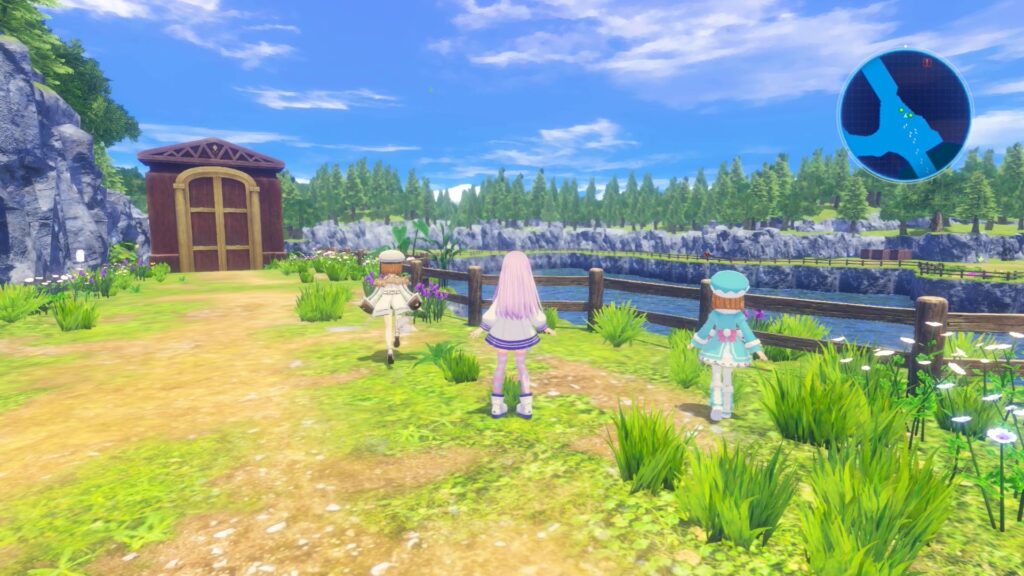
On the other hand, this is a Neptunia game, and it’s not unreasonable to wonder if any design decisions like this have been deliberately made in order to hammer home a point. Specifically, I can’t help but think that the emphasis on leafy outdoor environments is a bit of a dig in the ribs at the endless procession of open-world games with rocky, foliage-covered landscapes.
It’s not as if the game doesn’t have some impressive environments, either; for the first time in the series, Neptunia: Sisters vs Sisters features a fully realised 3D representation of the city of Planeptune, which you can wander around and explore rather than simply picking things from a menu. And it’s lovingly rendered, too; there’s a ton of detail scattered around the place that series fans will particularly appreciate, but it also simply looks like a nice place to live. You can understand why its citizens remain loyal.
It’s also worth noting that despite the repeated environments, the actual map layout for the various dungeons are all quite different from one another, and, again, notably more complex than in earlier Neptunia titles. Neptunia: Sisters vs Sisters’ use of the Unity engine allows the map design to support rooms and tunnels that wind around one another and can even be on top of one another, rather than simply being what feels like a 2D map extruded into 3D. There are ladders to climb, switches to flip, doors to open and teleporters to make use of — even Metroid-style shortcuts to unlock.
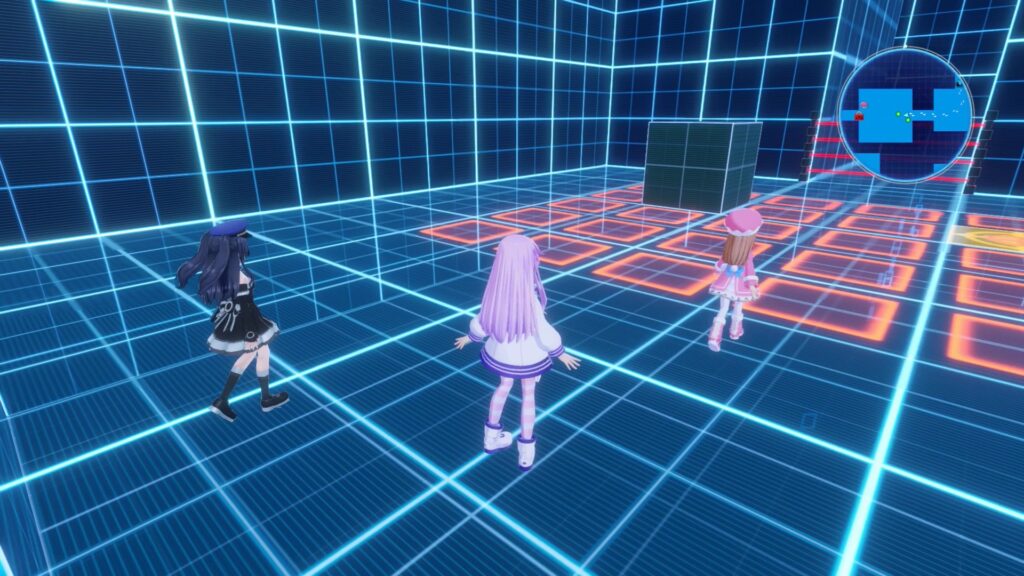
Particular highlights come in the form of more abstract dungeons with a wireframe design. This is a callback to the secret Wizardry-inspired dungeon from Megadimension Neptunia VII — though you do at least have a map to refer to here. In these particular dungeons, which tend to occur during major story moments, there’s an even stronger emphasis on puzzle-solving; sure, most of said puzzles involve faithful old block-pushing, but some are satisfyingly devious to figure out.
Combat-wise, Neptunia: Sisters vs Sisters occupies a space somewhere between the traditional turn-based Neptunia titles and the more recent action games. Engaging in combat with an enemy switches to a specific battle mode in which you’re confined to an arena — though actually in the dungeon itself rather than a separate battle screen — and can move around freely.
The character you’re controlling can unleash combo attacks for as long as they have Action Points remaining, and these gradually regenerate over time; stronger individual abilities can also be used when a Tactical Points bar fills, and these temporarily raise the character’s maximum Action Points, allowing for longer combos.
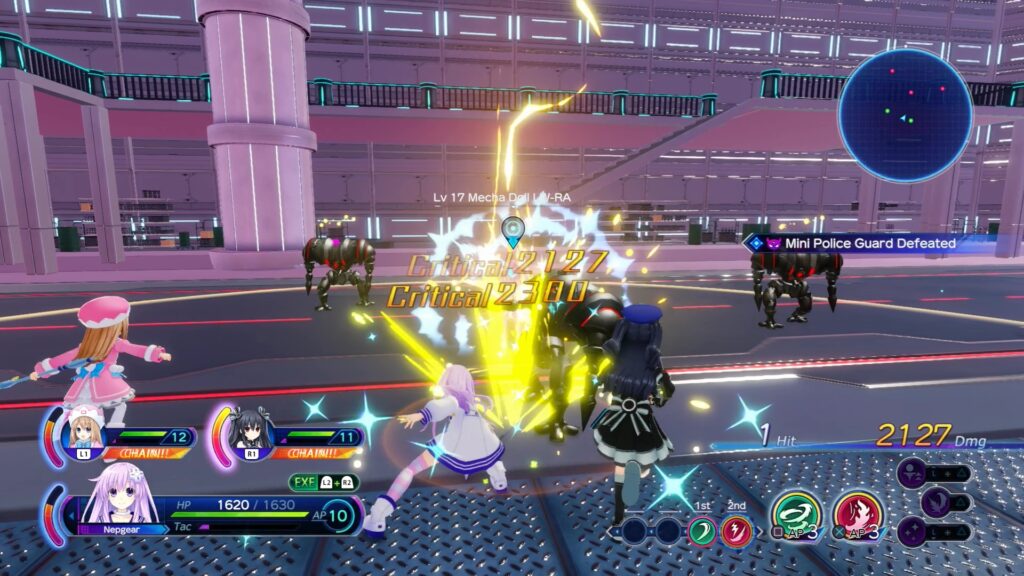
There’s an emphasis on chaining attacks between characters; reaching the end of a combo or using a Tactical Skill prompts you to switch to one of the other two characters in the party, and doing so awards a temporary damage boost to everyone. If you can keep chaining combos and skills together like this, you can raise this to impressive levels, which is useful in some of the game’s tougher fights.
The combo system is highly customisable, allowing you to assign specific skills to each step in the combo, which lets you focus on particular types of attack, close-range or far-off attacks, elemental abilities or simply abilities that work well when performed one after the other. With certain equipment, it’s possible to unlock a second “stripe” of combos, too, allowing access to two different combo strings which can be jumped back and forth between according to the situation; this, for example, allows you to set up one combo to be specifically for close-up attacks, and another for long-range attacks.
The one issue is that the levelling curve for Neptunia: Sisters vs Sisters feels a bit too fast. I found in my initial playthrough of the game that I was constantly outlevelling the enemies I was facing at each point of the main story, which meant that for the most part, combat was very, very easy and didn’t necessarily require that I engage with the more interesting, complex mechanics along the way.
This changes a bit in the later game, when you can take on tough Arena challenges and the special Neptral Tower dungeon, but for the most part running through the main scenario of the game — particularly if you’re doing all the sidequests along the way — things are a tad easy.
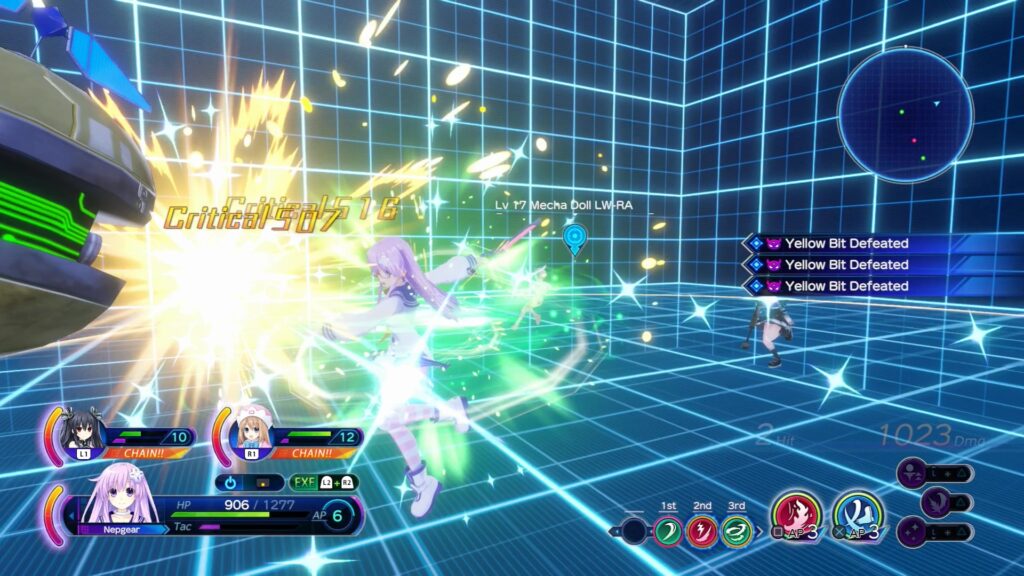
That’s not necessarily a dealbreaker, mind — one of my favourite RPGs from last year, Rhapsody, was also probably the easiest game I’ve ever played — but it is something that those craving a bit of a challenge might wish to take into account. The story is the star here, rather than the challenge factor.
Aside from that, the combat in Neptunia: Sisters vs Sisters is good; it strikes a good balance between real-time action and the more traditional turn-based Neptunia titles. This isn’t a button-masher by any means; you’ll not only need to take into account things like positioning, timing and hitstun, but also mechanical aspects like the deliberate delay between performing a combo and being able to perform other actions like blocking or dodging.
It takes a bit of adjusting to, particularly if you were expecting the combat to unfold exactly like previous Neptunia action games, but on the whole it works well, and makes for pleasingly energetic, quick battles.
There’s a lot more we could say about Neptunia: Sisters vs Sisters but honestly, this is a game where discovering some of its hidden depths and surprises is part of the fun, so we’ll leave things there for now. Suffice to say that this is a very good Neptunia game, and outside of its few minor niggles such as the difficulty curve and lack of dungeon variety, it will keep fans of the mainline series in particular very happy indeed — especially with its story, which is one of the most emotionally engaging, dark and ambitious tales the franchise has ever told.
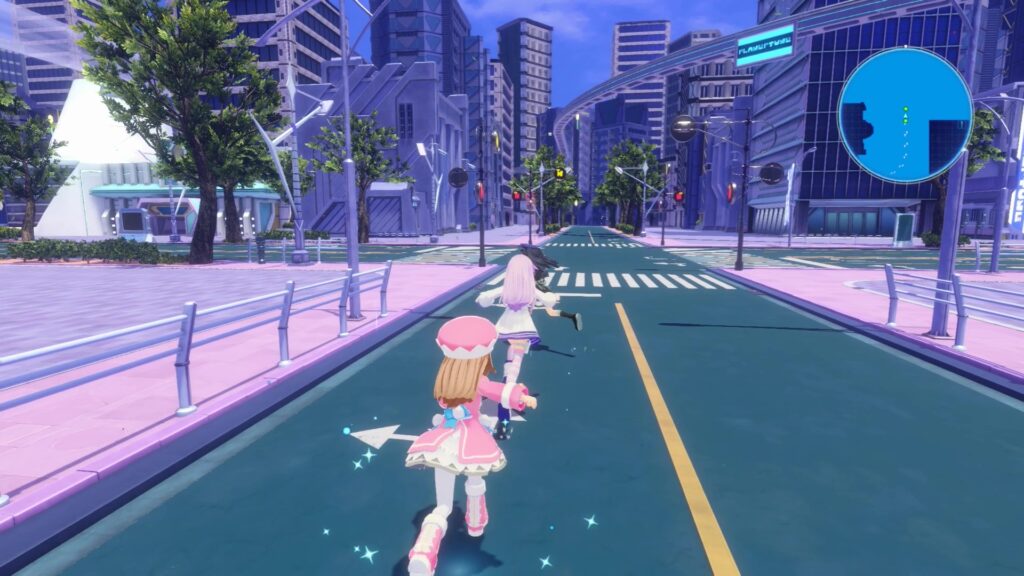
Whether you’re new to Neptunia or a grizzled old veteran like me, Neptunia: Sisters vs Sisters is a must-play entry in the series — though in the former case I’d perhaps recommend at least playing through mk2 or Re;Birth2 first — and it’s a delight to see the series thriving. Here’s to many more years of Nep ahead of us!
Join The Discussion
Rice Digital Discord
Rice Digital Twitter
Rice Digital Facebook
Or write us a letter for the Rice Digital Friday Letters Page by clicking here!
Disclosure: Some links in this article may be affiliate links, which means we may earn a small commission if you make a purchase after clicking on them. This is at no additional cost to you and helps support Rice Digital!
- Letter from the Editor: passing the torch - June 30, 2023
- Super Woden GP 2 is looking promising - June 30, 2023
- Inti Creates is making a 32 bit-style Love Live action platformer - June 26, 2023






